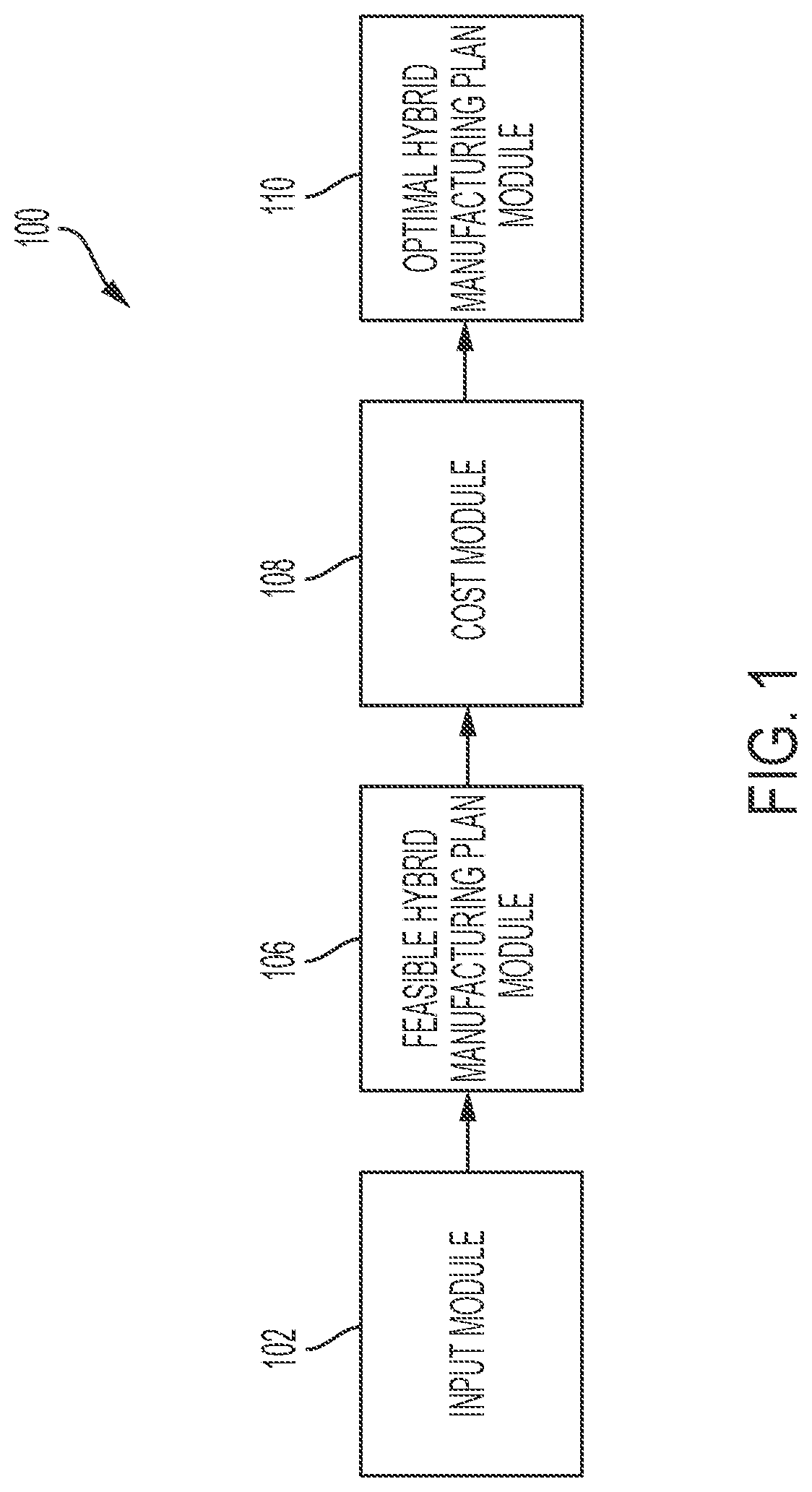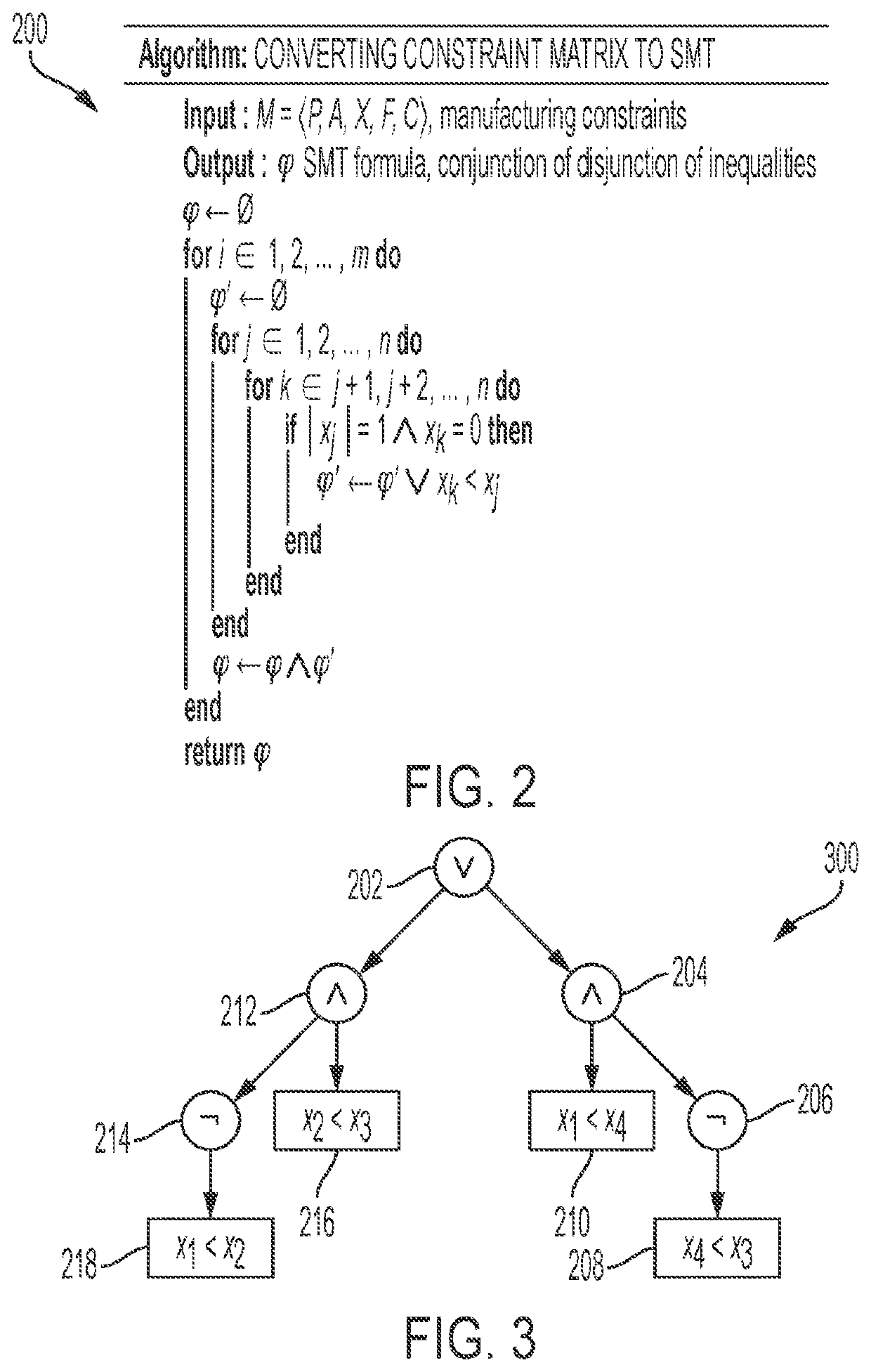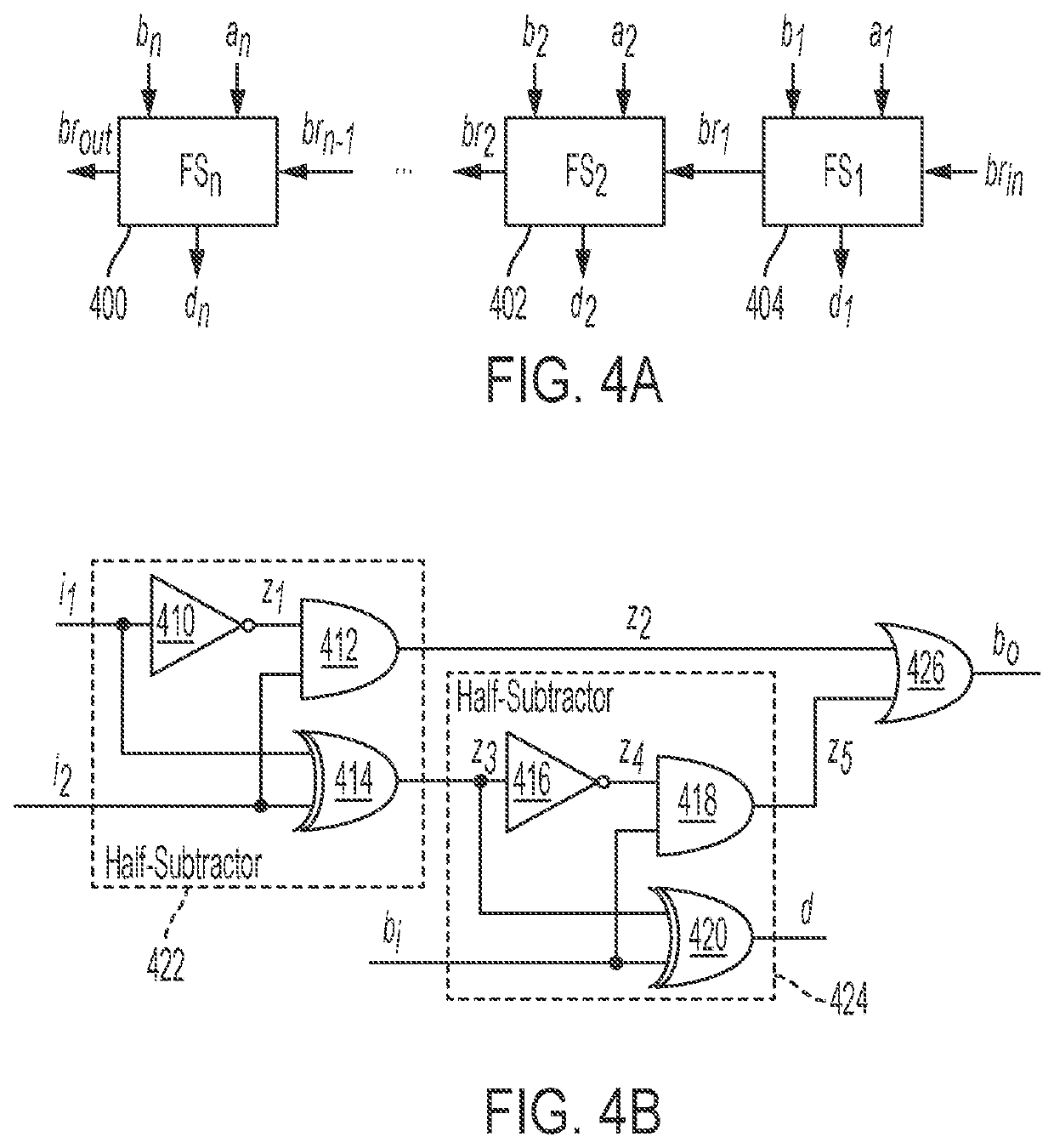System and method for determining hybrid-manufacturing process plans for integrated circuits based on satisfiability modulo difference logic solver
a technology of satisfiability and logic solver, applied in the direction of electric programme control, total factory control, instruments, etc., can solve the problems of increasing the cost of manufacturing the object, increasing the time-to-market, and adding post-processing operations
- Summary
- Abstract
- Description
- Claims
- Application Information
AI Technical Summary
Benefits of technology
Problems solved by technology
Method used
Image
Examples
Embodiment Construction
[0023]The following description is presented to enable any person skilled in the art to make and use the embodiments, and is provided in the context of a particular application and its requirements. Various modifications to the disclosed embodiments will be readily apparent to those skilled in the art, and the general principles defined herein may be applied to other embodiments and applications without departing from the spirit and scope of the present disclosure. Thus, the present invention is not limited to the embodiments shown, but is to be accorded the widest scope consistent with the principles and features disclosed herein.
Overview
[0024]Embodiments described herein solve the technical problem of determining optimized hybrid-manufacturing plans for manufacturing an IC. Specifically, a system can determine a sequence of additive, subtractive, or optionally modification operations in a cost-effective and efficient way to fabricate the IC. During operation, the system can obtain...
PUM
 Login to View More
Login to View More Abstract
Description
Claims
Application Information
 Login to View More
Login to View More - R&D
- Intellectual Property
- Life Sciences
- Materials
- Tech Scout
- Unparalleled Data Quality
- Higher Quality Content
- 60% Fewer Hallucinations
Browse by: Latest US Patents, China's latest patents, Technical Efficacy Thesaurus, Application Domain, Technology Topic, Popular Technical Reports.
© 2025 PatSnap. All rights reserved.Legal|Privacy policy|Modern Slavery Act Transparency Statement|Sitemap|About US| Contact US: help@patsnap.com



